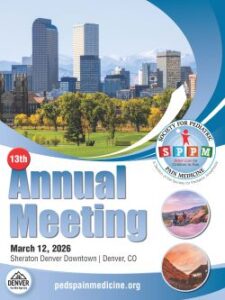June's Question Submitted By:
 Thomas Spain, MD, MPH
Thomas Spain, MD, MPH
Associate Professor UT Southwestern
Children's Medical Center Dallas
Case History:
You are called to the ED to evaluate a 16-year-old male with a severe headache. The patient has a history of testicular germ cell tumor diagnosed two years ago and is s/p surgical resection and chemotherapy. Today he complains of a 10/10 pulsating pain in the right temporal region. As you enter the patient’s room, you notice that all the lights are off. The patient’s mom quickly greets you at the door, whispering as she introduces herself, she provides you with some further history. You note that the patient is resting in bed with a cold rag over his eyes with a nearby emesis basin filled with vomitus. Mom reports that the patient started experiencing similar headache episodes 6 months ago. He had an ER visit three weeks ago where he was treated with Benadryl, Compazine, and Toradol with limited benefit. He was then admitted for three days for treatment with DHE that was effective, but his headache returned after 48 hours. Mom is asking if something different can be used to help her child.
Based on the current literature, which of the following is true?
Correct!
Wrong!
Question of the Month - June 2021
Correct Answer is C. A case series of 8 patients showed significant reduction in pain scores after receiving propofol in patients who failed a combination of triptans, opioids, NSAIDs, or steroids
RATIONALE:
Migraine headaches can cause severe, disabling pain, leading many patients to present to the Emergency Room (ER) in search of pain relief. Migraines are common in children with prevalence of 5% by age 10 and this increases further during adolescence. The use of propofol for refractory migraines is currently being investigated. A retrospective study on children with migraines showed propofol to be an effective abortive treatment. (1). In another study, even though propofol was not superior to standard therapy, it resulted in fewer rebound headaches and shorter length of stay. (2) A RCT in adults concluded that propofol can be used for management of acute migraines with decreased rates of recurrence in the propofol group compared to the Sumatriptan group. (3) A case series of 8 patients showed significant reduction in pain scores after receiving propofol in patients who failed a combination of triptans, opioids, NSAIDs, or steroids. (4) Propofol works by increasing GABA-mediated inhibitory tone in the CNS. Propofol decreases the rate of dissociation of the GABA from the receptor, thereby increasing the duration of the GABA-activated opening of the chloride channel with resulting hyperpolarization of cell membranes.
Migraines result from a combination of lifestyle, environmental, and genetic factors. The risk of suffering from migraines is about 50% higher among those who have a first degree relative with migraines. Certain disorders that affect children have been associated with migraines and may represent manifestations of migraine genes in their early years. Ability to diagnose and treat migraines in a timely manner may decrease disability, minimizing days away from school and the negative impact on social life. Preventive treatment includes lifestyle modifications, cognitive behavior therapy and medications. The Pediatric Migraine Disability Assessment (PedMIDAS) is a useful tool in assessing the degree of disability and the response to treatment.
REFERENCES:
1. Gelfand A., Pediatric and adolescent headache. Continuum (MINNEAP MINN), 2018; 24(4): 1108-1136
2. Sheridan D.C., Spiro D. M., Nguyen T., Koch T.K., Mackler G.D., Low dose Propofol for the abortive treatment of pediatric migraine in the emergency department. Pediatric Emergency Care, 2012; 28(12): 1293-1296
3. Sheridan D.C., Hansen M.L., Lin A.L., Fu R., Meckler G.D., Low dose Propofol for pediatric migraine: A prospective, randomized controlled Trial. Journal of Emergency Medicine. 2018; 54(5):600-606
4. Moshtaghion H., Heiranizadeh N., Rahimdel A., Esmaeili A., Hashemian H., Hekmatimoghaddam S., The efficacy of Propofol vs. subcutaneous Sumatriptan for treatment of acute migraine headaches in the emergency department: A double-blinded clinical trial. Pain practice, 15(8), 701-705.
RATIONALE:
Migraine headaches can cause severe, disabling pain, leading many patients to present to the Emergency Room (ER) in search of pain relief. Migraines are common in children with prevalence of 5% by age 10 and this increases further during adolescence. The use of propofol for refractory migraines is currently being investigated. A retrospective study on children with migraines showed propofol to be an effective abortive treatment. (1). In another study, even though propofol was not superior to standard therapy, it resulted in fewer rebound headaches and shorter length of stay. (2) A RCT in adults concluded that propofol can be used for management of acute migraines with decreased rates of recurrence in the propofol group compared to the Sumatriptan group. (3) A case series of 8 patients showed significant reduction in pain scores after receiving propofol in patients who failed a combination of triptans, opioids, NSAIDs, or steroids. (4) Propofol works by increasing GABA-mediated inhibitory tone in the CNS. Propofol decreases the rate of dissociation of the GABA from the receptor, thereby increasing the duration of the GABA-activated opening of the chloride channel with resulting hyperpolarization of cell membranes.
Migraines result from a combination of lifestyle, environmental, and genetic factors. The risk of suffering from migraines is about 50% higher among those who have a first degree relative with migraines. Certain disorders that affect children have been associated with migraines and may represent manifestations of migraine genes in their early years. Ability to diagnose and treat migraines in a timely manner may decrease disability, minimizing days away from school and the negative impact on social life. Preventive treatment includes lifestyle modifications, cognitive behavior therapy and medications. The Pediatric Migraine Disability Assessment (PedMIDAS) is a useful tool in assessing the degree of disability and the response to treatment.
REFERENCES:
1. Gelfand A., Pediatric and adolescent headache. Continuum (MINNEAP MINN), 2018; 24(4): 1108-1136
2. Sheridan D.C., Spiro D. M., Nguyen T., Koch T.K., Mackler G.D., Low dose Propofol for the abortive treatment of pediatric migraine in the emergency department. Pediatric Emergency Care, 2012; 28(12): 1293-1296
3. Sheridan D.C., Hansen M.L., Lin A.L., Fu R., Meckler G.D., Low dose Propofol for pediatric migraine: A prospective, randomized controlled Trial. Journal of Emergency Medicine. 2018; 54(5):600-606
4. Moshtaghion H., Heiranizadeh N., Rahimdel A., Esmaeili A., Hashemian H., Hekmatimoghaddam S., The efficacy of Propofol vs. subcutaneous Sumatriptan for treatment of acute migraine headaches in the emergency department: A double-blinded clinical trial. Pain practice, 15(8), 701-705.
 SPPM 13th Annual Meeting
SPPM 13th Annual Meeting